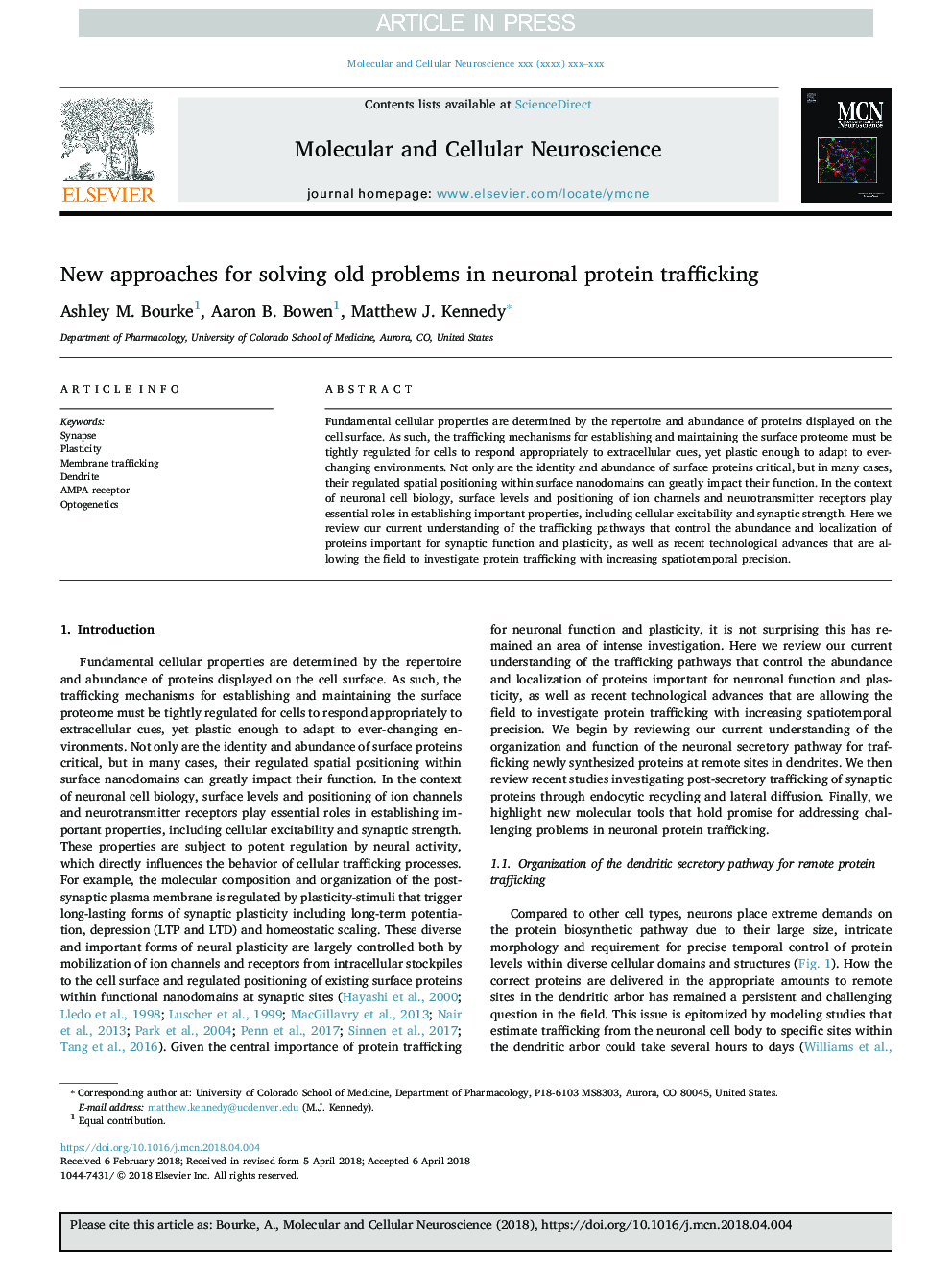| Article ID | Journal | Published Year | Pages | File Type |
|---|---|---|---|---|
| 8962261 | Molecular and Cellular Neuroscience | 2018 | 19 Pages |
Abstract
Fundamental cellular properties are determined by the repertoire and abundance of proteins displayed on the cell surface. As such, the trafficking mechanisms for establishing and maintaining the surface proteome must be tightly regulated for cells to respond appropriately to extracellular cues, yet plastic enough to adapt to ever-changing environments. Not only are the identity and abundance of surface proteins critical, but in many cases, their regulated spatial positioning within surface nanodomains can greatly impact their function. In the context of neuronal cell biology, surface levels and positioning of ion channels and neurotransmitter receptors play essential roles in establishing important properties, including cellular excitability and synaptic strength. Here we review our current understanding of the trafficking pathways that control the abundance and localization of proteins important for synaptic function and plasticity, as well as recent technological advances that are allowing the field to investigate protein trafficking with increasing spatiotemporal precision.
Related Topics
Life Sciences
Biochemistry, Genetics and Molecular Biology
Cell Biology
Authors
Ashley M. Bourke, Aaron B. Bowen, Matthew J. Kennedy,
